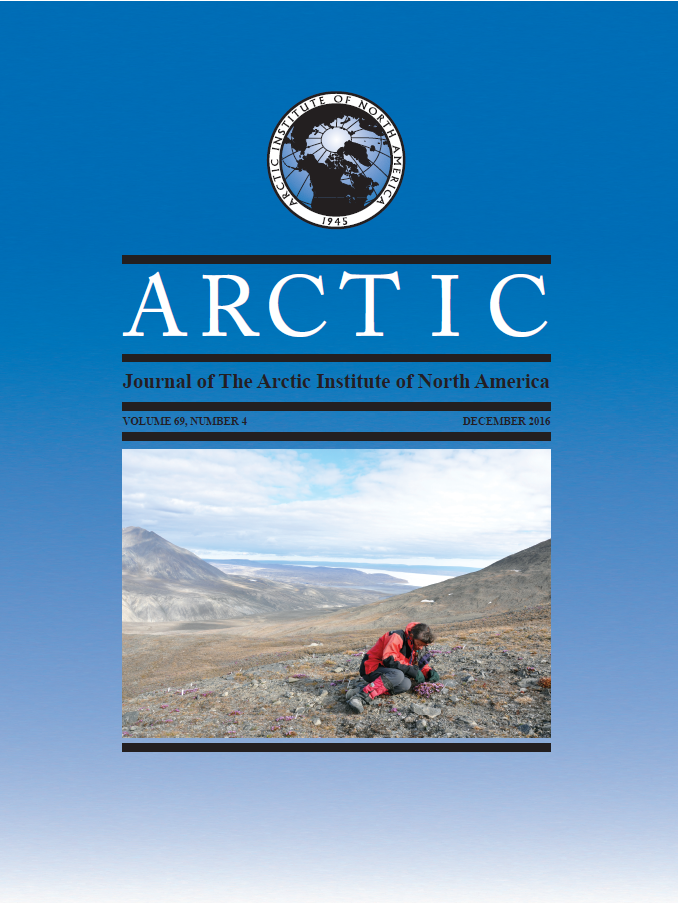Changes in Fish Catch Rates in the Presence of Air Gun Sounds in Prudhoe Bay, Alaska
DOI:
https://doi.org/10.14430/arctic4596Keywords:
sound and marine life, air guns, fish, seismic, Before-After/Control-Impact, Alaska, Prudhoe Bay oil fieldAbstract
Air guns used in oil industry seismic surveys have the capacity to change fish catch rates, but no previous work has demonstrated this effect in shallow water or in Arctic oilfields. Long-term monitoring of fish catches using four fyke nets allowed assessment of changes in catch rates during a 2014 seismic survey in Prudhoe Bay, Alaska. Fyke net locations were instrumented with both conventional hydrophones and vector sensors. Catch rates were generally within the range of those found in 27 previous sampling seasons. The effect of air guns on eight species was assessed using a modified Before-After/Control-Impact analysis, with historical data and 2014 data as the Before-After components of the analysis and days without and with air gun activity as the Control-Impact components. Results showed significant changes associated with air guns in catch rates at one or more nets at p < 0.1 for all eight species and at p < 0.05 for seven of the eight. Changes included both increased and decreased catch rates, perhaps reflecting displacement of fish in response to air gun sounds throughout the study area. Measured sound pressure levels associated with air gun pulses were low and usually undetectable close to the fyke nets, reflecting the loss of low frequencies in shallow water (~1.5 m). Attempts to measure particle velocities failed when wind-driven surface waves overwhelmed vector sensors. However, fish responses may have been related to changes in particle motion associated with air gun sounds.


